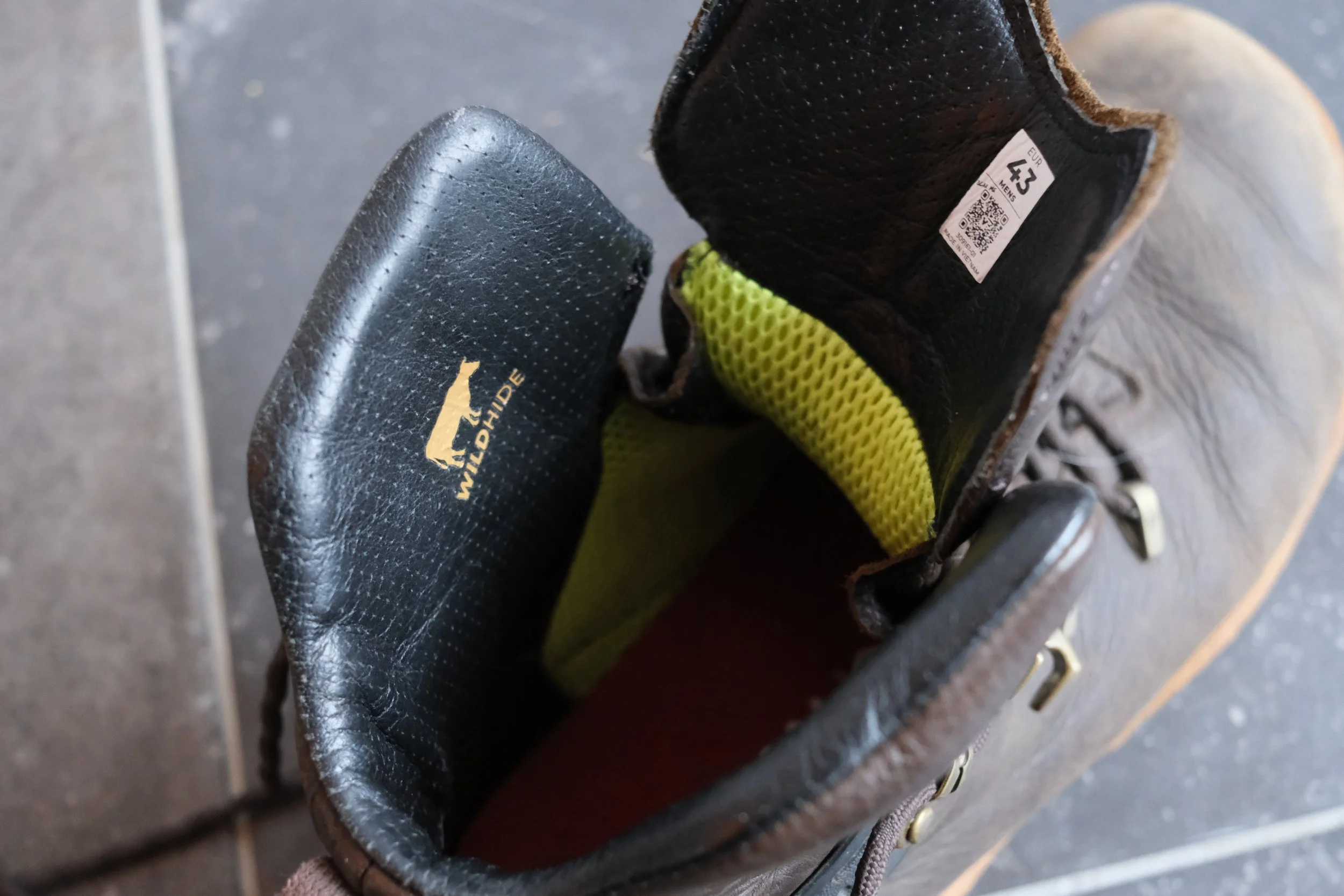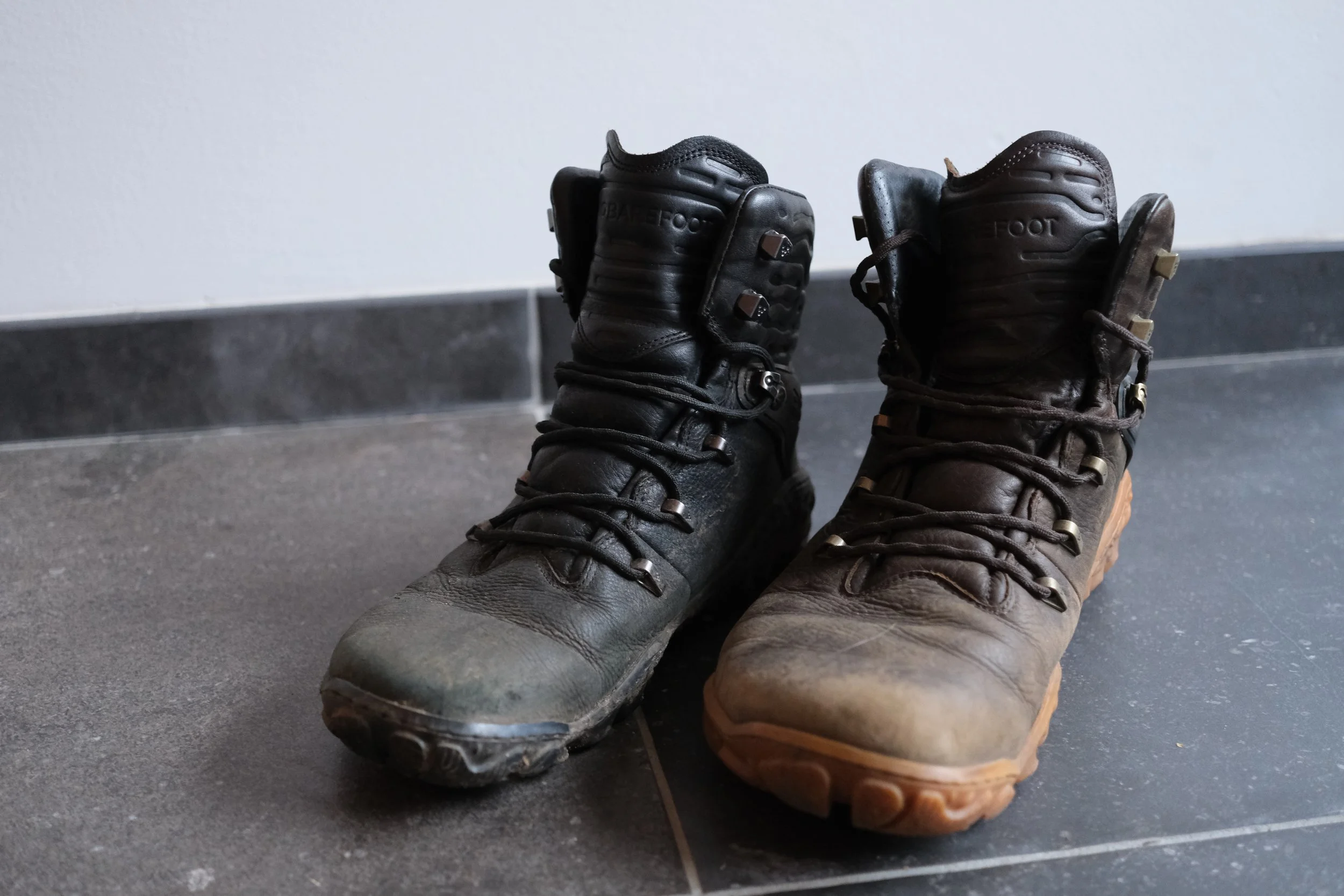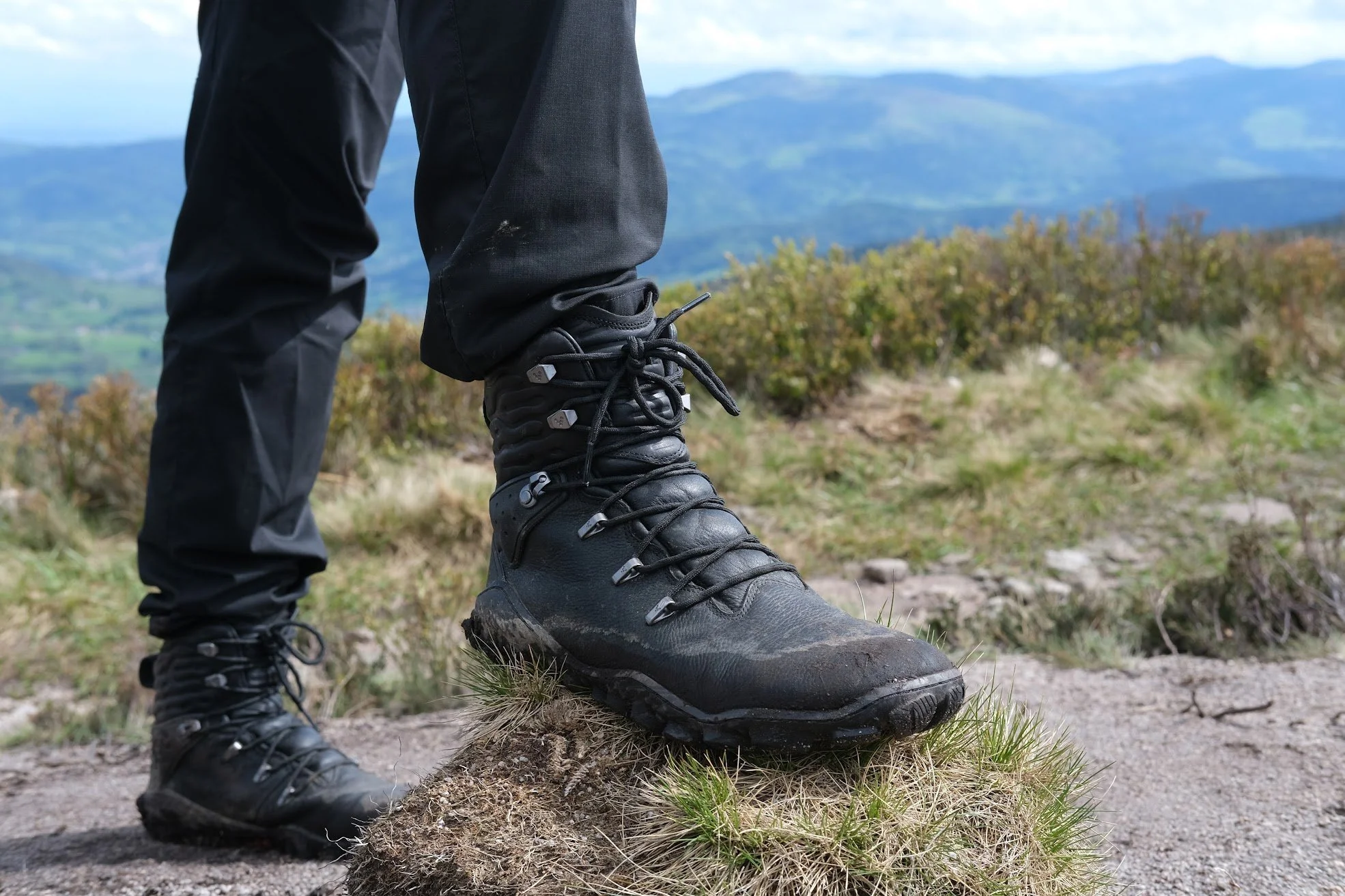Gear Review: Vivobarefoot Forest Tracker ESC
For those who are unfamiliar with barefoot shoes: this might not be the review for you. But if you regularly (or exclusively) walk on barefoot style shoes, and are looking to up your hiking game then these might be the shoes for you! We have been using barefoot shoes for around two years now in mountains, muddy forests and on sandy beaches. And while we understand the benefit of using quick-drying trailrunning shoes for everything, sometimes you just want something sturdy. And that is where the Forest Tracker ESC come in! In our opinion, these boots from Vivobarefoot are the ideal fall/winter hiking shoes, that look good and have excellent grip on about any terrain.
Facts & Figures
Dimensions:
Women’s size 40 L x W x H: 29 x 11 x 18 cm
Men’s size 43 L x W x H: 32 x 12 x 19 cm
Weight:
Women’s size 40: 504,2g per shoe
Men’s size 43: 576,4g per shoe
Properties:
Material: Leather outside, Michelin rubber soles
Waterresistant - no waterproof liner
Insulation for colder days
Price: €250,00
A closer look






Let’s start of with the obvious: these shoes look good! We’ve always like the look of a ‘regular’ hiking boot and really think these have a similar vibe. The shoe comes in both brown (Forest Bracken) and black (Obsidian) leather, with the brown ones having a lighter colored sole. The soles are made out of Michelin rubber, are very obvious and rugged, giving them an outdoor vibe. You lace the shoes up through two eyelets, making sure they stay nice and tight around your ankle. While lacing the boots can be a bit of a hassle, you get used to it quickly. The only negative we have on this is that the laces are really round and smooth, which means they very easily untie if you don’t tie a double knot in them.
Around quick to wear points, the back and insides of the shoes, Vivo has added rubber patches. This is really helpful when navigating rocky terrain for example, because you don’t damage the shoes when you slide around. Due to their height, we do always wear these shoes with high sock, otherwise I got some chafing on the back of my ankle. Other than that, these shoes have zero break-in time. Right out of the box, it feels like you’re walking in your slippers that’s how comfy and warm they are.
Grip and warmth
The most important thing to me with winter boots are how well they grip in wet and muddy terrain, and of course if they are warm. The Trackers perform great on both counts! The rugged soles have kept us steady through some real muddy forest and wet tree roots are also handled well. In the snow they have enough grip, just be careful when walking on ice cause they do slide around then. Regarding warmth, these shoes are damn cozy. However, as with many barefoot shoes, when you are standing still for a longer period some cold from the ground might start to seep trough the soles. To combat this, we added the thermal insoles from Vivobarefoot which fixes this problem. On the other hand, in the summer, these shoes run a bit warm for our tastes. Add to this that you slide around a bit if you wear a very thin sock, they aren’t the best choice for those warmer months of the year.
Waterproof
Another common question for hiking boots is whether they are waterproof. While no shoe will ever be completely waterproof, these boots have held up great in the rain so far. They are fully leather, without a waterproof liner. If you treat them with a leather balsam regularly, this will help maintain the waterproof qualities of the leather. We have used these boots in the pouring rain, jumped in a lot of puddles and they have kept our feet nice and dry. The rugged soles mean they can also be paired with gaiters if you want, these fit nicely between the grooves to keep them in place.
Field testing
We have been using the Trackers for a year now, and have walked close to 250km in them. There is no visible wear on them thus far, and the only upkeep the need is some leather balsam every now and again. Because these are barefoot style, you can directly feel the terrain you are navigating. When the shoe might start to slip, this is easy to notice and correct. The chance of rolling an ankle is also much lower for me, since I can move my foot more freely. Your feet do get tired a bit faster in these shoes compared to ‘ regular’ non-barefoot hiking boots, but that is to be expected and goes away with a lot of use.
We used these boots in the mountains of Switzerland and Italy, trekked trough boggy terrain in Norway and Sweden and walked our the wet Netherlands a lot. They kept us steady and our feet dry through all of this. The rubber patches work great on rocky terrain, and the grooves in the soles make sure you maintain grip in the mud. The leather does show some aging from it’s use, but that is to be expected from a natural product.
Pros and cons
Pro
Warm and waterresistant boots
Very grippy in wet/muddy terrain
Comfortable barefoot style
Sturdy materials of outer shoe
Con
Expensive
Too warm for summer months
Leather needs some regular upkeep
Soles cannot be replaced when worn out
Conclusion
Of course the final question is if these boots are worth their price, and if I would buy them again. You can get the Forest Tracker ESC on the Vivobarefoot site for €250. That is quite a bit of money, on par with regular style hiking boots from for example Meindl or Hanwag. While we do think these shoes are worth it, one thing to note is that it seems impossible to replace the sole when worn out. While a normal hiking boot can be brought to a cobbler to be re-soled, this seems hard to do with the Trackers. Nonetheless, the boots have held up great so far, and if you really want to have a barefoot style shoe to head into the mountains with, we would highly recommend these.


